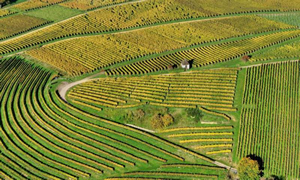EU's future cyber-farms to utilise drones, robots and sensors
 Anthony King, From Horizon Magazine: Bee-based maths is helping teach swarms of drones to find weeds, while robotic mowers keep hedgerows in shape.
Anthony King, From Horizon Magazine: Bee-based maths is helping teach swarms of drones to find weeds, while robotic mowers keep hedgerows in shape.
"We observe the behaviour of bees. We gain knowledge of how the bees solve problems and with this we obtain rules of interaction that can be adapted to tell us how the robot swarms should work together," said Vito Trianni at the Institute of Cognitive Sciences and Technologies of the Italian National Research Council.
Honeybees, for example, run on an algorithm to allow them to choose the best nest site, even though no bee knows the full picture.
Trianni runs an EU-funded research project known as SAGA, which is using the power of robotic groupthink to keep crops weed free.
"We can use low-cost robots and low-cost cameras. They can even be prone to error, but thanks to the cooperation they will be able to generate precise maps at centimetre scales," said Trianni.
"They will initially spread over the field to inspect it at low resolution, but will then decide on areas that require more focus," said Trianni. "They can gather together in small groups closer to the ground."
Importantly the drones make these decisions themselves, as a group.
Next spring, a swarm of the quadcopters will be released over a sugar beet field. They will stay in radio contact with each other and use algorithms learnt from the bees to cooperate and put together a map of weeds. This will then allow for targeted spraying of weeds or their mechanical removal on organic farms.
Today the most common way to control weeds is to spray entire fields with herbicide chemicals. Smarter spraying will save farmers money, but it will also lower the risk of resistance developing to the agrichemicals. And there will be an environmental benefit from spraying less herbicides. Full Article
Comments (0)
This post does not have any comments. Be the first to leave a comment below.
Featured Product


